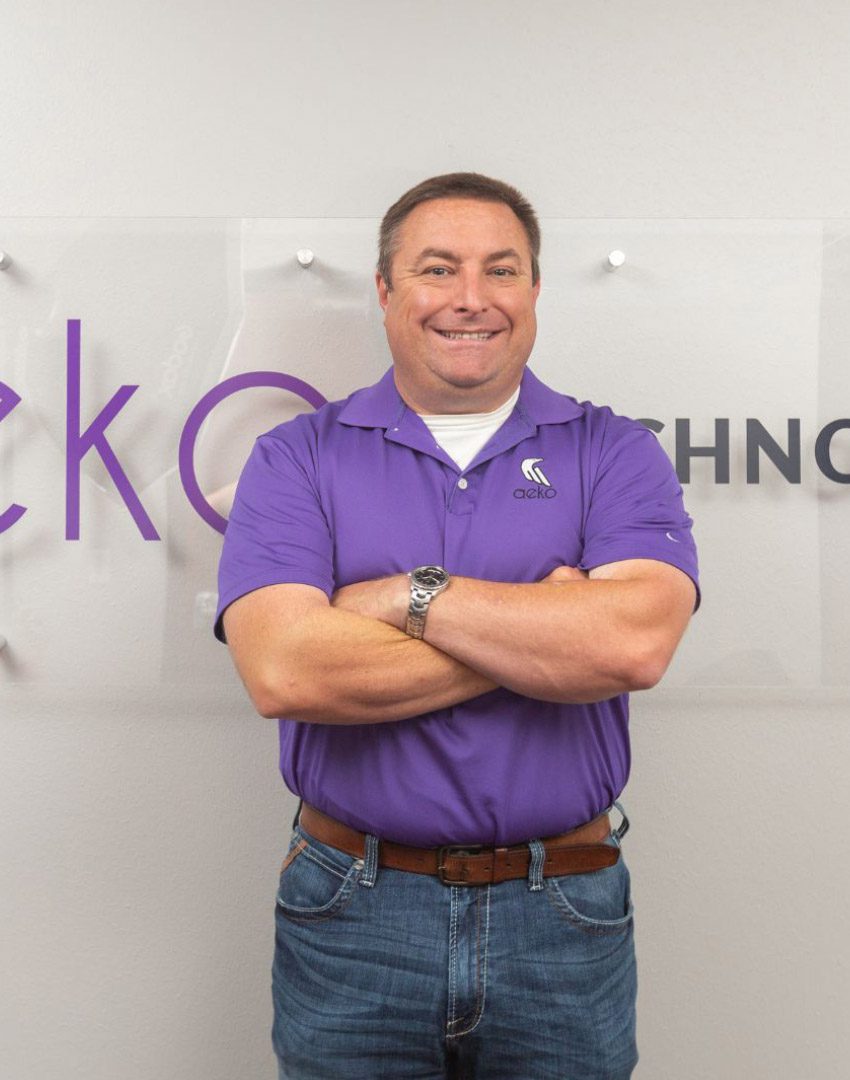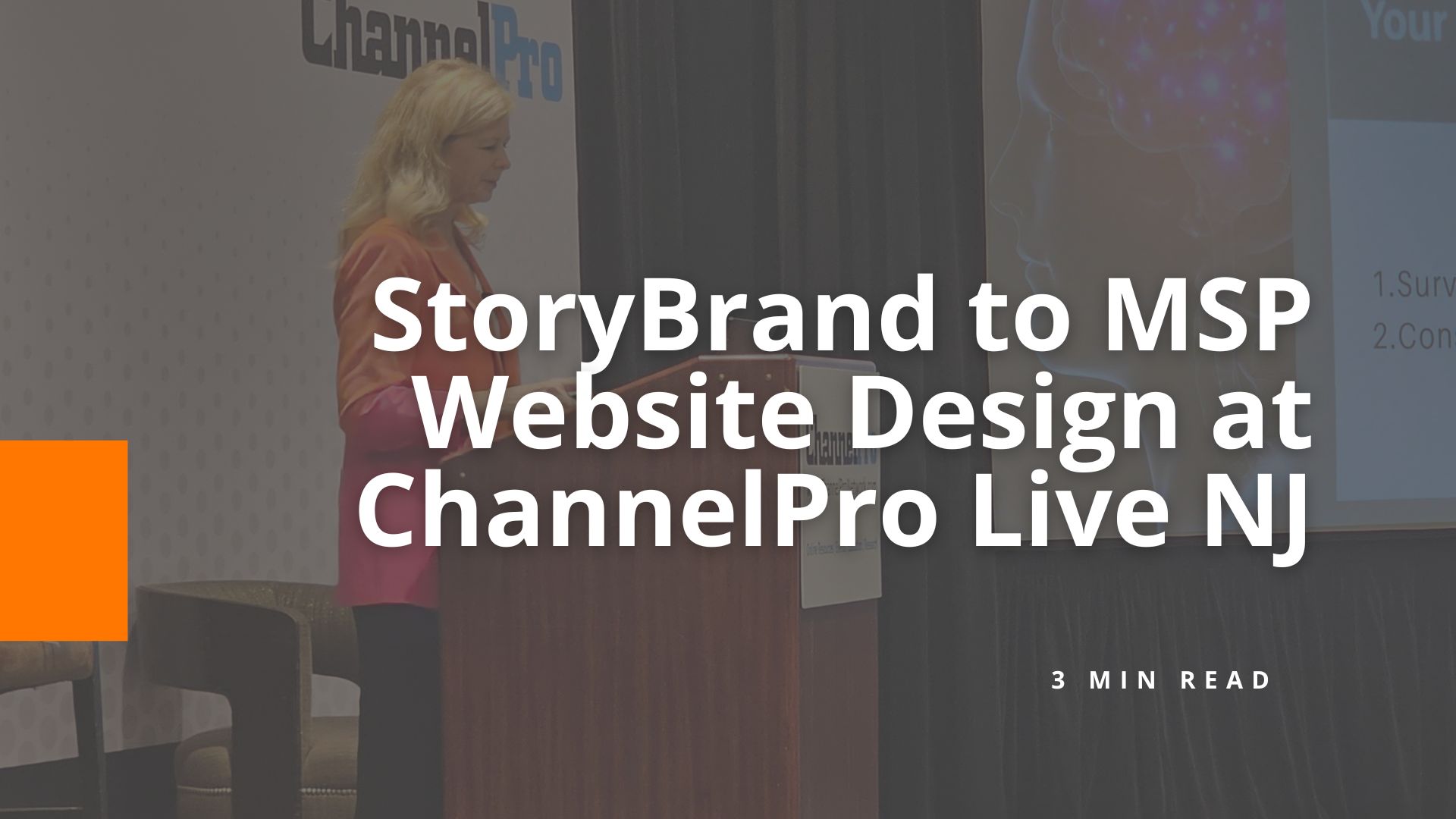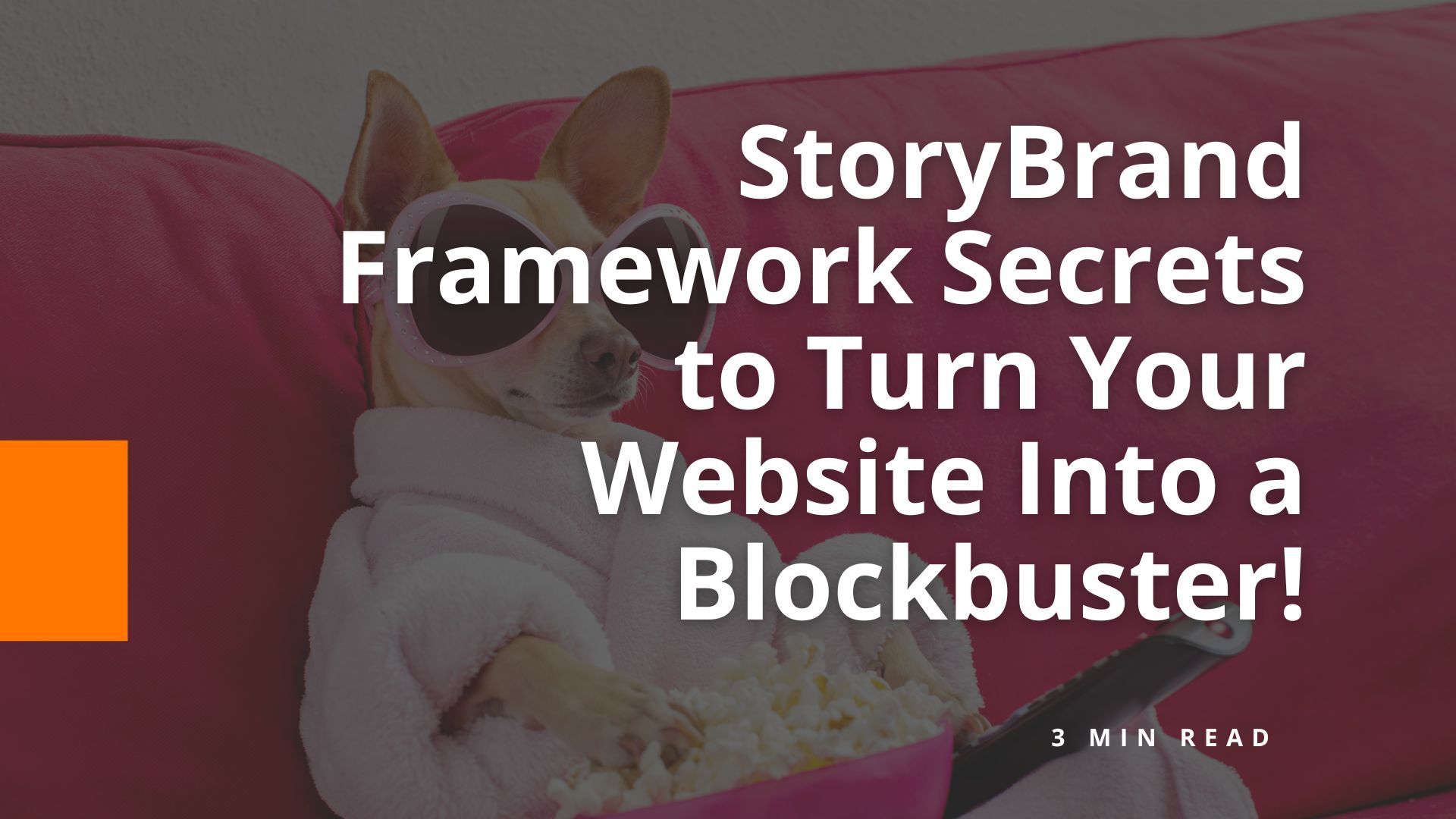Unlock the power of clear messaging with StoryBrand! Partnering with a certified StoryBrand agency enhances your brand story, attracts customers, and drives sales through compelling, customer-centric narratives.
Unlock the Power of StoryBrand
Inquire for more information on how to start your StoryBrand project with us today.
1. Introduction to StoryBrand
Once upon a time, a service-based business sought new ways to grow.
You've been pulled into a story if you read that line and now want to know more about this business. When you work with a StoryBrand-certified agency or guide, you’ll discover just how powerful storytelling can be in getting the word out about your organization.
Start at the beginning.
We all know that today, viewers’ and readers’ attention is scarce, making competition fierce for businesses that want to capture their audience's imagination and drive meaningful engagement.
Enter StoryBrand, a concept based on the book by Donald Miller, that has revolutionized the way businesses communicate with their customers. But what exactly is StoryBrand, and why has it become a cornerstone of effective marketing strategies?

At its core, StoryBrand is more than just a messaging framework.
It's a philosophy that recognizes the power of storytelling in shaping perceptions, forging connections and ultimately driving action. A StoryBrand certified guide, like the team at BigOrange Marketing, understands the importance of crafting narratives that resonate with audiences on a deeper level and compel them to not just listen, but to actively participate in the brand's story.
In this comprehensive guide, we walk you through the elements of the StoryBrand framework and explore its significance in digital marketing practices. From understanding the fundamentals of storytelling to dissecting its role in building brand identity and driving conversions, we'll uncover how embracing the power of narrative can transform your marketing efforts from mundane to memorable.
2. Understanding the Seven Elements of StoryBrand

Donald Miller's StoryBrand framework has become a beacon for marketers seeking clarity and effectiveness in their messaging. At its core, the framework simplifies the complex art of storytelling into seven key elements, each serving a crucial role in crafting a compelling narrative that resonates with audiences.
You’ll recognize these seven elements because you’ve seen or heard about them in books you’ve read or movies you’ve watched. Every StoryBrand certified agency or guide knows these elements are practically hard-wired into our DNA as humans and that they can be used to share messaging with would-be customers or clients.
Examples of successful implementation of the StoryBrand framework abound in the marketing landscape. From Apple's iconic "1984" commercial to Nike's "Just Do It" campaign, brands have leveraged the power of storytelling to captivate audiences, inspire action and drive results. Read on to discover how StoryBrand marketing has paid off for our BigOrange clients over the years.
Here are the seven key elements of StoryBrand.
3. Putting StoryBrand Marketing to Work
To effectively leverage the StoryBrand framework in your marketing efforts, it's crucial to start by identifying your target audience. Remember, this audience is the main character or hero in the story. Clearly identifying them involves creating detailed customer personas that outline the demographics, psychographics and pain points of your ideal customers.
You can compile the answers to these questions into a document, then blend them together to create a hypothetical persona or personas.
Give them a name and an image to really spark your understanding of who they are. For instance: IT Director Dan, Office Admin Annie or Empty Nester Nancy could be effective labels for your main character depending on the type of product or service you provide.
Take your time on this exercise, because the more you can empathize with your audience, the more your messaging will ring true with them. As a consumer, it’s easy to spot when a company or service provider just doesn’t “get it.”

Once you have a clear understanding of your audience, the next step is to craft a compelling brand story that resonates with them. This involves articulating your brand's mission, values and unique selling proposition in a way that speaks to the desires and aspirations of your target audience.
Not sure how to develop personas for your customers?
Often, it’s as simple as asking a sampling of current clients or customers some key questions, such as:
- What is a brief description of what your company does?
- What is your role at work? Your title? Who do you report to? Who reports to you? How is your job measured?
- What does a typical day at work look like for you?
- What are your biggest pain points or challenges? What keeps you awake at night in relation to your work?
- Why is it important to you to find a solution to these challenges or address these pain points now?
- What are your goals in your day-to-day job?
- What does success at work look like for you? What would make you feel accomplished?
- How do you learn about new information that helps you do your job? Publications? Trade organizations? Blogs? Groups?
- How do you prefer to interact with vendors? Face to face? By email or phone?
- Why did you hire us or buy our products in the first place? What terms did you use to search for our services or products?
4. When the Would-Be Customer Challenge Turns Into Pain

Addressing customer pain points is another critical aspect of StoryBrand marketing. By empathizing with the challenges your customers face and positioning your product or service as the solution, you establish credibility and trust with your audience.
Remember, your audience wants to be the hero in their own story; they want your company to be a guide. So, you have to prove that you understand them and their day-to-day struggles, goals or aspirations.
By positioning your brand as the expert who can help customers navigate their challenges and achieve their goals, you establish a strong connection and differentiate yourself from competitors.

Yoda You’ll Be
Just to reiterate: Your customer wants to be the hero. Your company is not the hero. You, friends, are the guide. There are plenty of examples of guides in books and films you can relate to: Yoda, the Scarecrow, Mr. Miyagi. These mentors help the main character along their journey.
And why does the main character trust them? Because they have demonstrated authority of some kind. Whether it’s knowing how to use the Force or how to apply wax to a car, these guides share their expertise.
Your StoryBrand certified agency or guide will walk you through identifying your expertise so that it can be highlighted in your messaging. Has your company won awards or earned important certifications? Have you been in business for decades or do you have hundreds of five-star reviews? According to StoryBrand, calling out these “authority points” is critical to setting your company up as a trustworthy guide.
Light the Fire
You don’t want a potential customer to just read your messaging and move on. You want them to take a specific action. Presenting a clear call to action is vital for guiding your audience towards the desired outcome. Whether it's making a purchase, signing up for a free trial or contacting your sales team, the CTA should be clear, compelling and aligned with the customer's needs and motivations.
You may be tempted to trot out a tired and wishy-washy call to action like: Learn More.
Instead try pinpointing a clear action, like:
- Book a meeting
- Call us
- Start the conversation
- Get a free quote
Once you settle on a call to action, place it on a clickable button that’s used everywhere on your website or in the text of your email newsletters. Be clear and consistent about telling people what you want them to do.
Describe the Outcome
What if you saw Dorothy and her band of guides follow the yellow brick road, but never found out what happened next? It wouldn’t make for a very rewarding story.
So think about what happens if your audience takes the action you want, hires you or buys your products. How does that make them feel or change their life?
Illustrating success and failure helps to reinforce the value proposition of your brand and create a sense of urgency. By showcasing the positive outcomes of choosing your brand and the potential drawbacks of not doing so, you compel action and motivate your audience to engage with your brand.
By the way, images play a role here, too. Does your website or social media content include photos of people enjoying their work or their lives more because they’ve used or interacted with your company? You can describe in words how happy customers will be because they chose your business, but it’s true that pictures are often worth thousands of words. (And, in today’s marketing, video is worth even more, by the way.)
5. Where to Use StoryBrand Marketing

You’ve done all the hard work to develop personas, identify audience pain points, imagine their successful outcomes and describe why your company can serve the role of the trusted guide. Now it’s time to put all that information to work for you.
First off, integrating the StoryBrand framework into your website is essential for creating a cohesive brand experience. This involves designing a website that follows the StoryBrand principles, with clear messaging, intuitive navigation and compelling calls to action.
Crafting compelling marketing collateral that aligns with the StoryBrand framework is crucial for maintaining consistency across all marketing channels. Whether it's email campaigns, social media posts or print materials, every touchpoint should reinforce your brand story and drive action.
Creating engaging content is another effective way to tell your brand story and connect with your audience on a deeper level. Whether it's blog posts, videos or social media content, focus on providing value, addressing customer pain points and positioning your brand as the guide.
6. Keys to Success and Results with StoryBrand
By now, you know StoryBrand is the key to your marketing and business successes, by making the customer the hero and positioning yourself as a guide. You may be thinking to yourself, does this actually work? Our heroes have had plenty of success with their StoryBranded website, content and social media.
First, let’s go over their challenges, and the two clients we mentioned had very similar challenges regarding their marketing strategy. They had challenges communicating with prospective clients who they were and how they would bring their clients value. Both Client A and Client B’s websites did not match their high-quality companies.
The solution for Client A was a new website with an updated appearance and content to back up the visual elements. We focused on increasing their SEO and continuously working to optimize their website and content effectively. By providing them with ongoing content we were able to set them up for future success.

The Results
Client A was able to grow their organic reach, rose significantly in the search results and saw a 200% increase in SEO in one year. To bring them more qualified leads and grows their business.
Client B also received an updated website that gained more leads. To do this we dove deeper into understanding who their customer was, and what pain points they needed resolved. Their solution was an updated website that discarded their content clutter and used up-to-date SEO tactics. We also implemented more conversion paths to generate more leads, sales and increase SEO.
We guided Client B to clear up their messaging and were able to attract 10+ more MQLs every month. A manager that works with Client B told us they are now getting more leads than they can handle. These leads have given them the ability to hit their company goals.
Beyond our clients, there are other real-world examples of where StoryBrand is used on websites. Let’s look at EBY, a company that makes aluminum truck bodies, on their homepage they use hero statements, clearly stating what they do by saying: “All aluminum truck bodies that help turn your hard work into profit.” Messages like this are relatable, showing site visitors and customers that your business cares about the challenges you are facing. When potential customers feel seen, heard and validated by your business, they are more likely to purchase your product or service.
Making an Impact
In this day and age, there is a crowded marketplace, and your business needs to cut through the noise to be noticed. This is a huge challenge for businesses, but if you tap into the power of storytelling you can connect with customers on a deeper level.
Every business has something that makes them unique: the story of how you help clients. Sharing the narrative around your brand’s values, mission and solutions helps build connections with clients and increases brand awareness. When you connect with your clients they are more likely to engage with your website and content, because it speaks to them. Whether they realize it or not, potential customers notice the difference and interact with your brand. These interactions increase your brand awareness, not only on social media but on your website as well.
Clients and potential clients want to be seen, heard and understood; they want to see that you empathize with their challenges and offer solutions to overcome them. The StoryBrand Framework allows you to effectively communicate the product or services offered and the pain points they resolve. This leads to more sales, and more MQLs knocking on your door.
Consider “StoryBranding” your:
- Video scripts.
- Email newsletters.
- Social media posts.
- Blog content.
- Sales emails.
- Presentation decks.
Wherever you want to capture people’s attention is a good place to bring in your StoryBrand messaging.
Conducting StoryBrand workshops and training sessions for your team is essential for ensuring alignment and consistency in your marketing efforts. By educating your team on the principles of StoryBrand and providing them with the tools and resources they need to apply them effectively, you empower them to create compelling, cohesive marketing campaigns that drive results.
7. The End of the Story and Beginning with Clear Messaging

As we conclude our exploration into the power of StoryBrand in marketing, it's clear that storytelling remains a timeless and potent tool for businesses seeking to connect with their audience on a deeper level.
The StoryBrand framework, pioneered by Donald Miller, provides a roadmap for crafting compelling narratives that resonate with customers, drive action and ultimately, propel business growth.
Throughout this guide, we've taken a close look at the key elements of the StoryBrand framework, from defining characters and problems to presenting clear calls to action and illustrating success and failure. We've seen how businesses across industries have leveraged these principles to create impactful marketing campaigns that capture attention, build trust and inspire loyalty.
As we look to the future of marketing, it’s clear that storytelling will continue to play a central role in shaping brand perceptions and driving consumer behavior. The StoryBrand framework offers a timeless approach to marketing that transcends trends and technological advancements, providing a solid foundation for businesses to navigate the ever-changing landscape of digital marketing.
Beyond our clients, there are other real-world examples of where StoryBrand is used on websites. Let’s look at EBY, a company that makes aluminum truck bodies, on their homepage they use hero statements, clearly stating what they do by saying: “All aluminum truck bodies that help turn your hard work into profit.” Messages like this are relatable, showing site visitors and customers that your business cares about the challenges you are facing. When potential customers feel seen, heard and validated by your business, they are more likely to purchase your product or service.
8. Additional StoryBrand Resources
Want to dive deeper into the world of StoryBrand and effective marketing strategies? Here are some additional resources to explore:
- "Building a StoryBrand: Clarify Your Message So Customers Will Listen" by Donald Miller: This book provides a comprehensive guide to implementing the StoryBrand framework in your marketing efforts.
- StoryBrand workshops and training: Consider attending a StoryBrand workshop or enrolling in online training courses to gain hands-on experience with applying the framework to your business.
- StoryBrand Podcast: Tune in to the StoryBrand Podcast for insights, tips and interviews with industry experts on all things related to storytelling and marketing.
- StoryBrand website: Visit the official StoryBrand website for articles, case studies and free resources to help you master the art of storytelling in marketing.
So, whether you're a seasoned marketer or just starting out, it’s a smart move to embrace the power of StoryBrand and start incorporating its principles into your own marketing strategy. By doing so, you'll not only build your brand's storytelling capabilities but also forge stronger connections with your audience and achieve greater success in your marketing endeavors.
9. Enjoy the StoryBrand Certified Agency Fireworks Show
StoryBrand Resources
Start Your StoryBrand Project Here

Step One
Schedule a non-sales call. No pressure. Real advice.

Step Two
Get a blueprint with digital marketing services that take you where you want to go.

Step Three
Grow and connect with customers, colleagues and new leads.
















